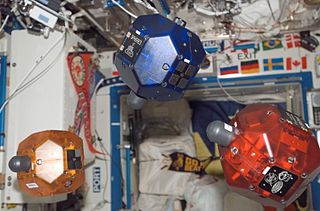 W
WA small satellite, miniaturized satellite, or smallsat is a satellite of low mass and size, usually under 500 kg (1,100 lb). While all such satellites can be referred to as "small", different classifications are used to categorize them based on mass. Satellites can be built small to reduce the large economic cost of launch vehicles and the costs associated with construction. Miniature satellites, especially in large numbers, may be more useful than fewer, larger ones for some purposes – for example, gathering of scientific data and radio relay. Technical challenges in the construction of small satellites may include the lack of sufficient power storage or of room for a propulsion system.
 W
WA small satellite, miniaturized satellite, or smallsat is a satellite of low mass and size, usually under 500 kg (1,100 lb). While all such satellites can be referred to as "small", different classifications are used to categorize them based on mass. Satellites can be built small to reduce the large economic cost of launch vehicles and the costs associated with construction. Miniature satellites, especially in large numbers, may be more useful than fewer, larger ones for some purposes – for example, gathering of scientific data and radio relay. Technical challenges in the construction of small satellites may include the lack of sufficient power storage or of room for a propulsion system.
 W
WA small satellite, miniaturized satellite, or smallsat is a satellite of low mass and size, usually under 500 kg (1,100 lb). While all such satellites can be referred to as "small", different classifications are used to categorize them based on mass. Satellites can be built small to reduce the large economic cost of launch vehicles and the costs associated with construction. Miniature satellites, especially in large numbers, may be more useful than fewer, larger ones for some purposes – for example, gathering of scientific data and radio relay. Technical challenges in the construction of small satellites may include the lack of sufficient power storage or of room for a propulsion system.
 W
WA small satellite, miniaturized satellite, or smallsat is a satellite of low mass and size, usually under 500 kg (1,100 lb). While all such satellites can be referred to as "small", different classifications are used to categorize them based on mass. Satellites can be built small to reduce the large economic cost of launch vehicles and the costs associated with construction. Miniature satellites, especially in large numbers, may be more useful than fewer, larger ones for some purposes – for example, gathering of scientific data and radio relay. Technical challenges in the construction of small satellites may include the lack of sufficient power storage or of room for a propulsion system.
 W
WMicrosat-TD was an Earth observing satellite developed by ISRO. Its launch marked India's 100 satellites in space. This satellite could capture images at night by imaging in infrared spectrum.
 W
WRaavana-1 was the first Sri Lankan satellite. The CubeSat-sized satellite was launched as part of the Cygnus NG-11 mission to the ISS on 17 April 2019. On 17 June 2019, the satellite was deployed into orbit from the ISS.
 W
WThe Synchronized Position Hold Engage and Reorient Experimental Satellite (SPHERES) are a series of miniaturized satellites developed by MIT's Space Systems Laboratory for NASA and US Military, to be used as a low-risk, extensible test bed for the development of metrology, formation flight, rendezvous, docking and autonomy algorithms that are critical for future space missions that use distributed spacecraft architecture, such as Terrestrial Planet Finder and Orbital Express.